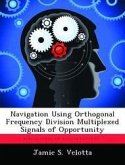Since GPS is generally limited to areas with clear sky view, additional methods of navigation are currently being explored. This thesis explores navigation using Signals of Opportunity(SoOP). The signals chosen for evaluation in this thesis are the common Internet IEEE 802.11a/g signals, or Wi-Fi. This thesis presents SoOP navigation based on cross-correlations of received data from multiple Wi-Fi stations. It shows the effectiveness of the methods using collected Wi-Fi signals in a real-world environment. By using simple statistical representations of collected data in large groups, or windows, cross-correlation calculations can produce timing offsets between simulated stations. The timing offsets, or time difference of arrival (TDOA) calculations, are used to solve nonlinear TDOA equations to determine a position in 3-D space. This thesis shows simulations using different window sizes, noise strengths, and signal magnitudes. The overall conclusion is that Wi-Fi signaling can be exploited and is a viable source for SoOP navigation methods. Results shown in this thesis present a possibility of zero errors in certain noise environments as well as lowered signal magnitudes.
Bitte wählen Sie Ihr Anliegen aus.
Rechnungen
Retourenschein anfordern
Bestellstatus
Storno









